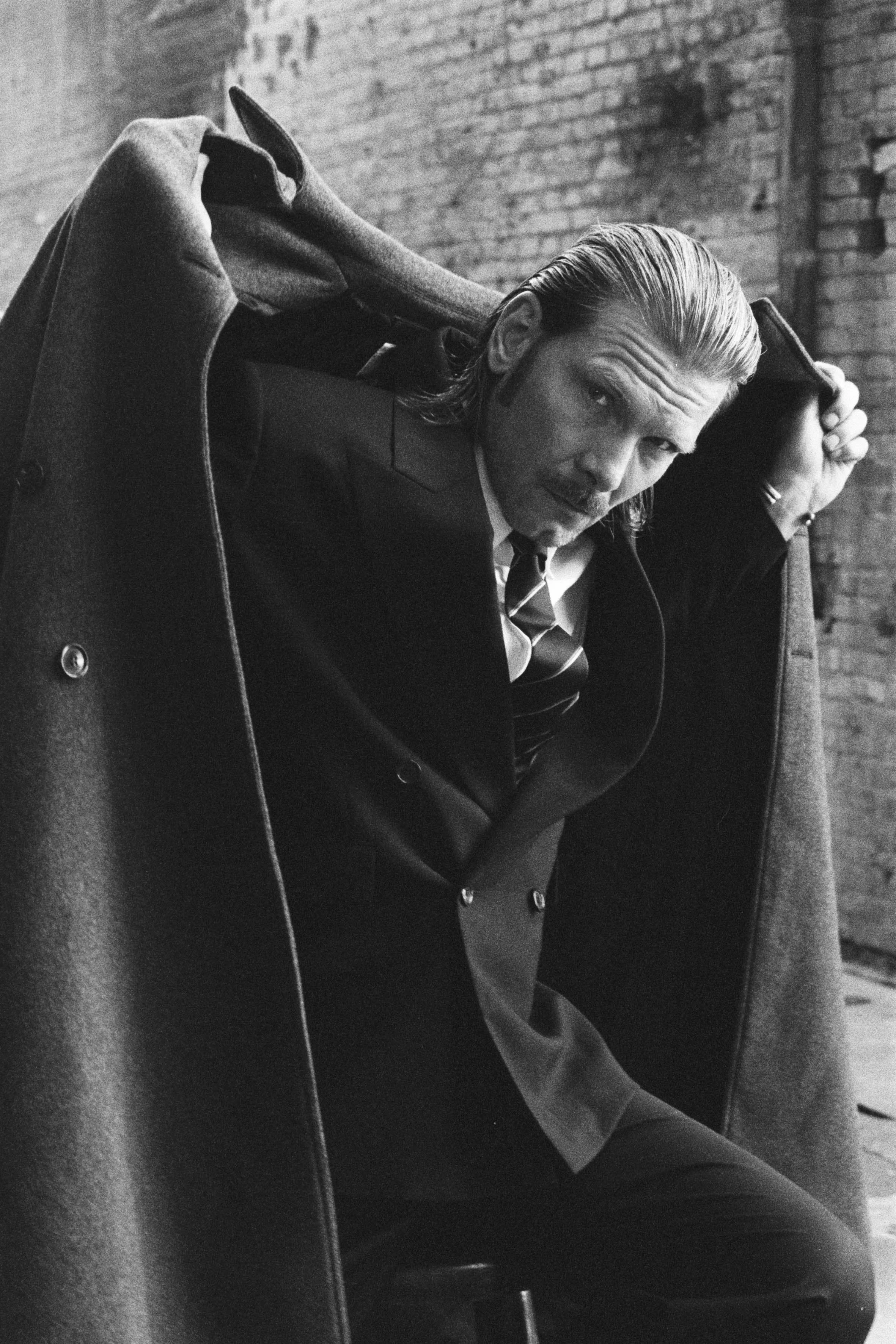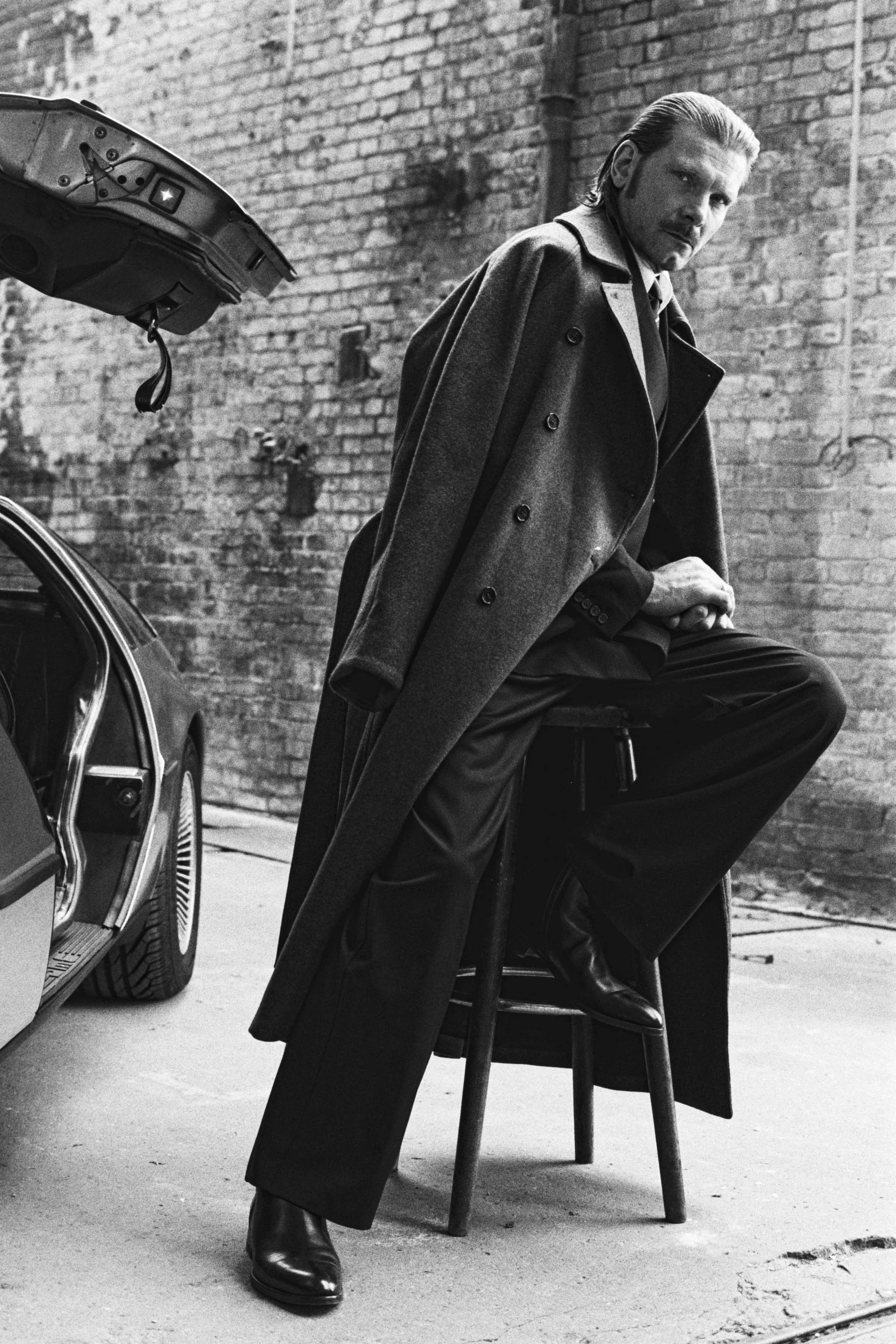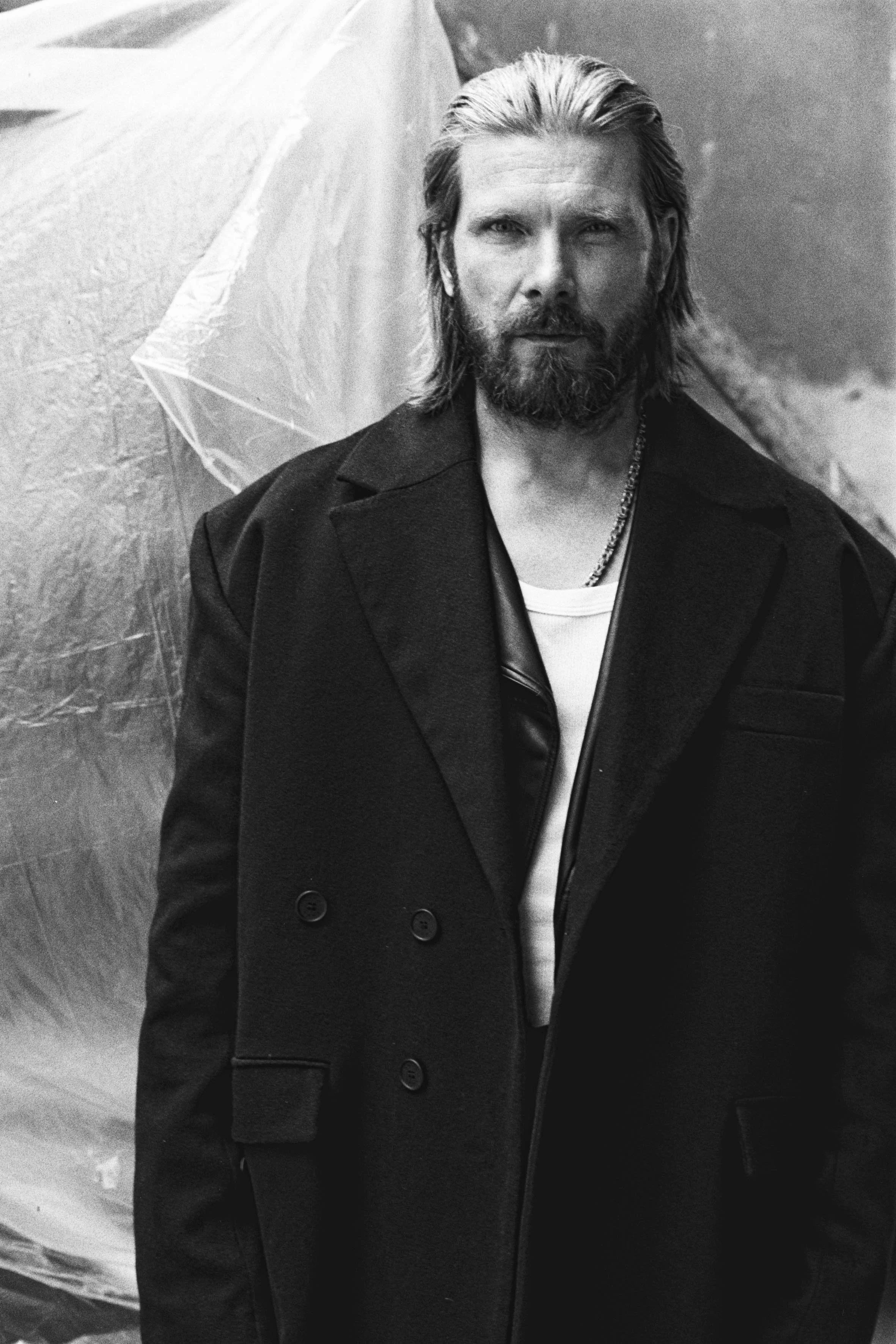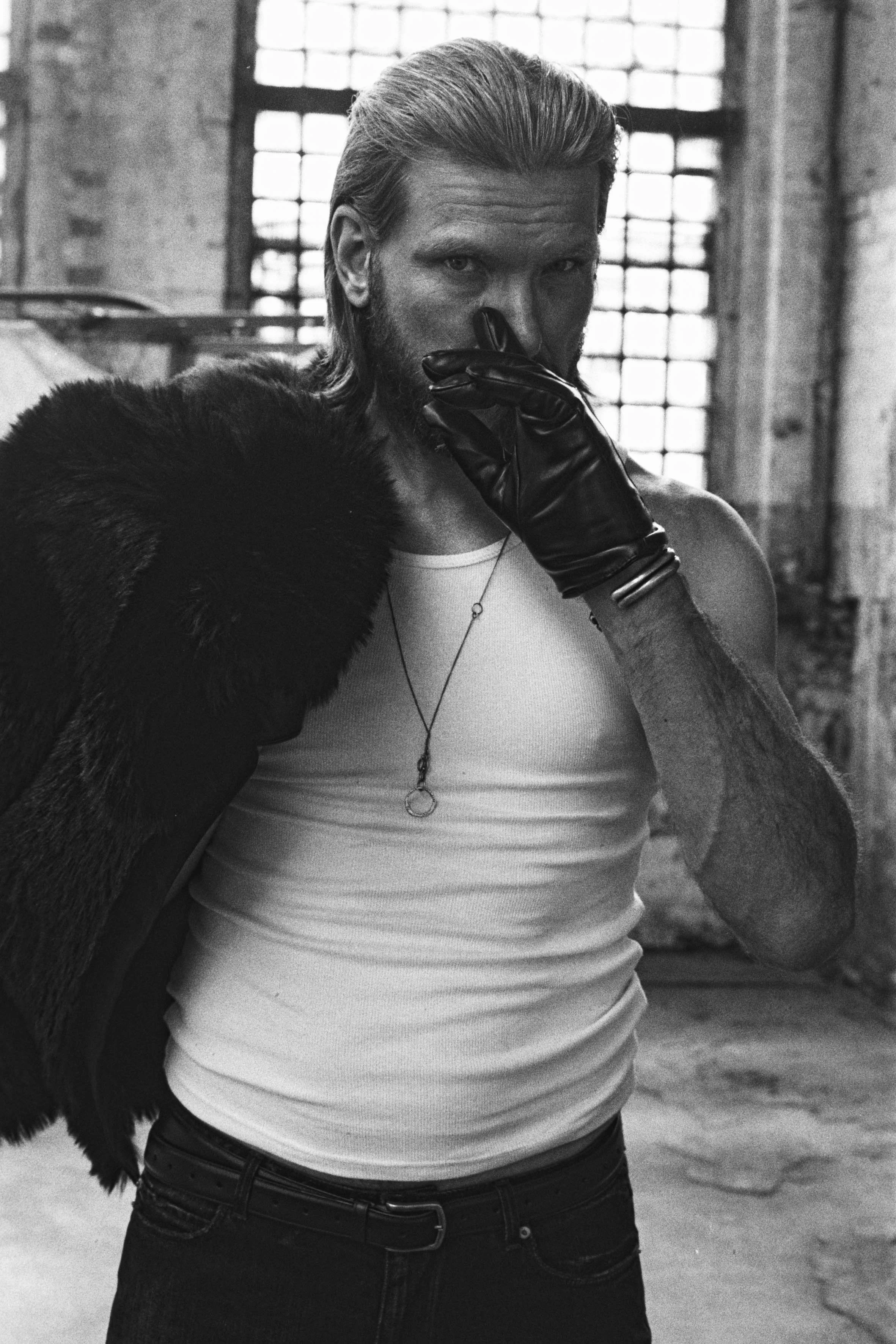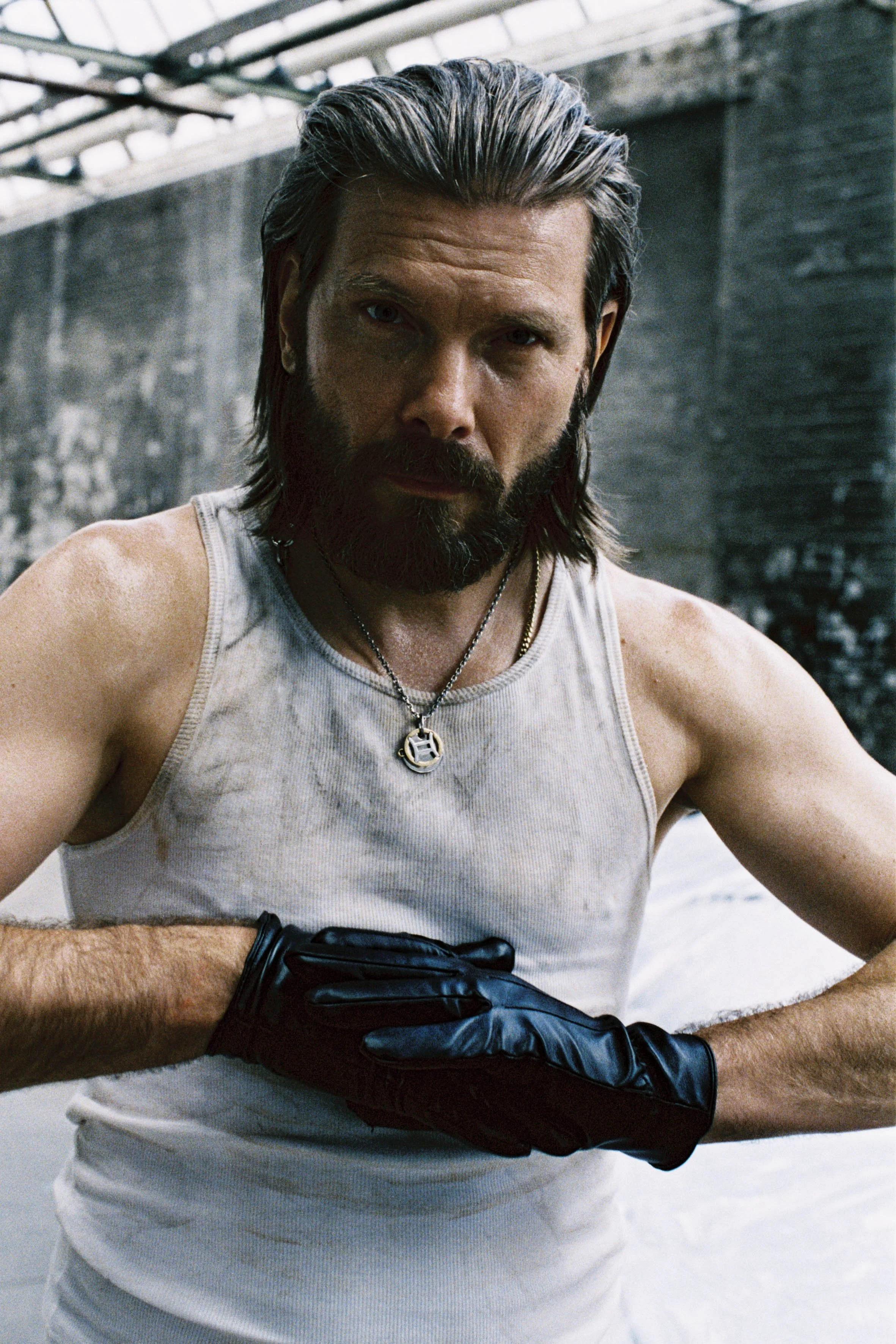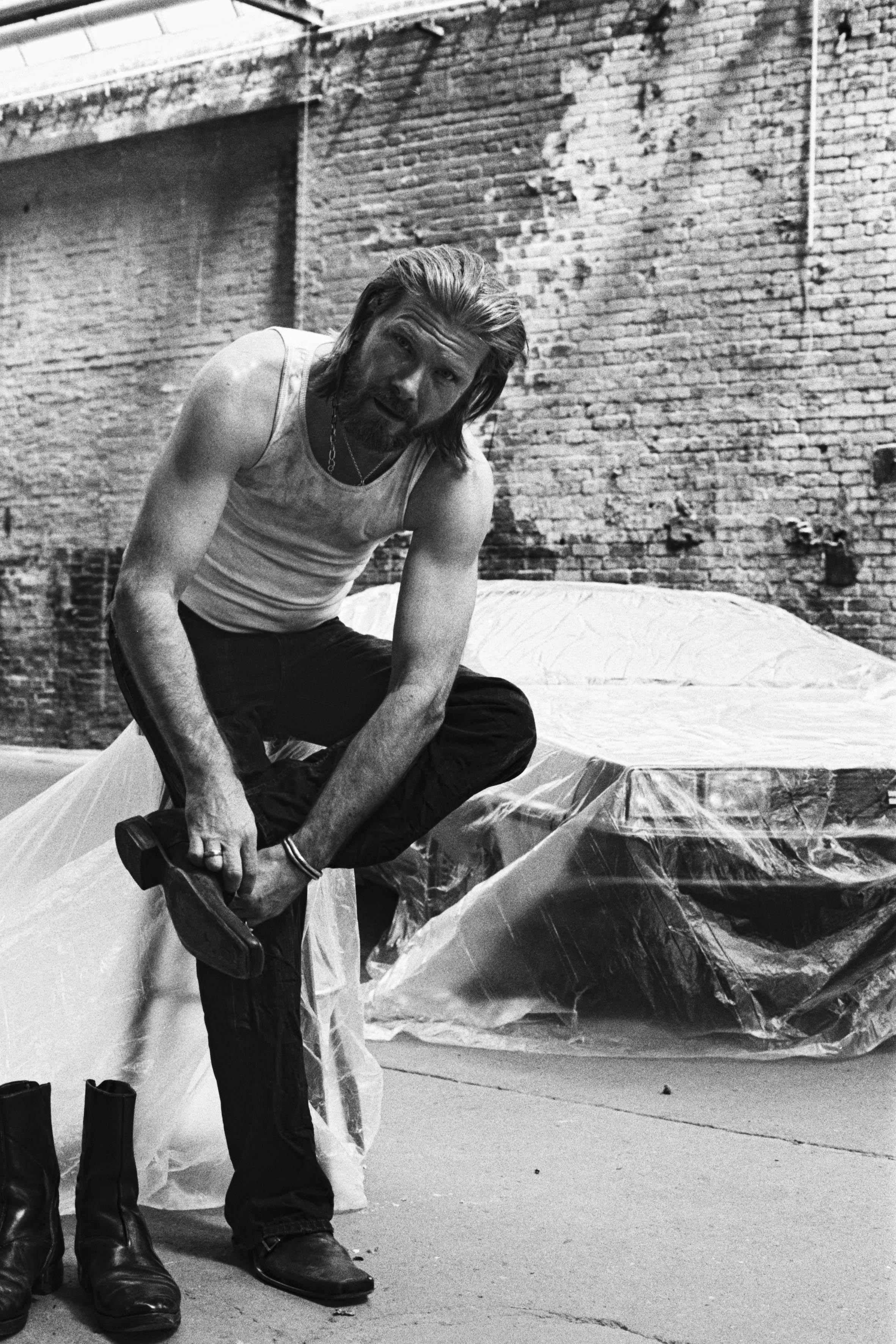IN CONVERSATION WITH MARCEL DETTMANN AND SVEN MARQUARDT
interview by THORE DAMWERTH
Few figures have influenced the emotional language of contemporary techno as deeply as MARCEL DETTMANN. For nearly three decades, his singular approach to sound – spanning forceful club architecture, atmospheric tension, and intuitive experimentation – has defined not only Berlin’s sonic identity but the global evolution of electronic music. Today, Dettmann stands at a new chapter in his artistic evolution. My Own Shadow, his latest project and new alias, marks a decisive expansion: a place where sound, image, body, and space converge into a single, ever-shifting vision.
This spirit of transformation is not emerging in isolation. Dettmann’s creative path is deeply intertwined with that of SVEN MARQUARDT, the photographer and cultural figure whose stark visual language has become synonymous with Berlin’s club mythology. Their collaboration stretches back more than 25 years, built on intuition, trust, and the ability to see one another beyond the surface.
For this editorial, Dettmann and Marquardt reunite once again, returning to shared history yet a curiosity that continues to keep their exchange alive. The resulting images – raw, atmospheric, quietly charged – trace the same tension that drives the work of both creatives: the fusion of intimacy and intensity, stillness and propulsion.
In the conversation that follows, both artists reflect on process, evolution, and the blurring of disciplines. While Dettmann reveals the origins of My Own Shadow, together they reflect on their long-standing creative friendship. One that has continually expanded their artistic worlds, allowing sound and image to evolve in dialogue and shape one another in ways neither could achieve alone.
full look SAINT LAURENT
Marcel, you’ve started a new work in progress, My Own Shadow, where you merge sound, image, and space. Can you already share a glimpse into this creative world?
Marcel: My Own Shadow, for me, is a kind of artistic convergence. A space where my different forms of expression meet. Music, photography, performance – all of these have always belonged together for me. I wanted to create a place where these disciplines don’t stand next to each other, but actually merge. It’s less about presenting a finished, rigid concept and more about making a process visible. Something that is constantly evolving.
In My Own Shadow’s first official release, Approaching, you juxtapose ambient textures with driving techno. How do you balance stillness and motion, intimacy and propulsion, in your music?
M: This tension has been with me for a long time. I like it when music feels both open and focused. When it’s allowed to breathe but still has an inner drive. For me, techno has never been just rhythm or function – it has always been emotion, space, and atmosphere as well. In Approaching, I wanted to make exactly that tangible: this synergy between closeness and distance, between energy and stillness.
coat and leather jacket GMBH
top STYLIST’S OWN
necklace AKKESOIR
Over the past decades, you have pursued photography in your life and on your travels worldwide. What draws you to photography, and how does it tie into your creative world and your music?
M: With my images, it’s essentially the same as with my music – both emerge intuitively. I see something, take a photo, edit it a bit. It’s similar in music, which is a lot about sound research, sound design, about experimenting with material. I’m not a classically trained musician who plays piano. I work more with sound the way others work with light: searching, exploring.
Photography is the quiet counterbalance to music for me. When I’m out and about, I pick up on moods, structures or shadows that later flow into my music, often without me realizing it. I’m not interested in perfect images, but in moments, textures, colors, patterns, and light. At its core, it’s the same attitude as in the studio: looking closely, listening, capturing something without trying to control it.
You’ve said you no longer want to simply release tracks or play sets, but to create “a space where all of my artistic expressions meet.” What inspired this evolution in your practice?
M: As an artist, I’ve always done whatever I felt drawn to. That has never changed. So it’s not about me not being able to or not being allowed to do something before. But after many years in the club context, I felt the need to expand my form of expression. My Own Shadow is less a break than an addition. A space where sound, image, body, and emotion come together on equal footing.
For me, it’s a natural evolution – not a farewell to DJing, but an expansion of what I’ve essentially always done.
fur coat and gloves 032C
pants and shoes BALENCIAGA
necklace 1 (over the tank top) BALENCIAGA
necklace 2 (under the tank top) AKKESOIR
bracelet TALENT’S OWN
tank top and ring STYLIST’S OWN
Collaboration seems essential to this new phase of your work – particularly your ongoing dialogue with Sven Marquardt, across photography, performance, and the shared DNA of Berlin’s club culture. How did your creative dialogue begin, and what do you think has sustained that exchange for so long?
M: I’ve known Sven since the early Ostgut days. Back then I was in my early twenties. A young guy from the countryside who suddenly found himself in the middle of this intense Berlin scene. Sven was already there, with his attitude, his gaze, his presence. I was impressed by the way he carries himself, how he sees people.
So we’ve known each other for over 25 years, and from the very beginning we kept coming back to working together on photos. I’ve always been a big fan of his work. What connects us is probably a similar sense of aesthetics – raw, honest, but also sensitive. Our collaboration doesn’t follow a plan in the classical sense. There’s a framework, but a lot of it just happens in the moment. We often understand each other without many words.
I think what keeps it alive for so many years is mutual respect and trust. Each of us brings our own world, but we leave space for one another.
Sven: In 2008, Marcel’s first album was released on OstgutTon. That’s when I photographed him for the very first time. We had already known each other for quite a while by then. After my shifts I often used to dance at Ostgut to his sets. Photography didn’t play such a big role in my life back then. And even though Marcel and I are technically from different generations, we share the same East German upbringing. I guess that does connect you in some way – a common language, a certain directness.
The so-called Nullerjahre, the 2000s, shaped us. During the first ten years of Berghain, we both had a kind of in-house mentor. He was the one who brought us together for that very first shoot. I don’t think anyone back then expected from that moment on that we would meet almost every year for another shoot. From the very beginning, it felt as if Dettmann was the perfect Marquardt model – whatever that even means (laughs). In the early years, each shoot had a mood board that we could plan from. Location, styling, and so on. For hair & makeup Saskia Krause has been with us since the very first shoot.
In 2015, we created BLACKBOX together – an audiovisual installation consisting of more than 50 photographs of colleagues, musicians, and various protagonists of the night, as well as a 15-minute sound loop by Marcel. The Blackbox then went on tour, practically around the world. Museums, galleries, the Goethe Institute, temporary venues… it became a kind of stand-in for Berlin’s club culture.
In 2023, there was SLIDE, a live performance by Marcel in Istanbul, with more than 100 Dettmann images, animated by a visual artist and projected on a huge LED wall.
For over 10 years, we were both represented by the in-house agency Ostgut Booking.
I was the only virtual artist among all the musicians. Marcel was more or less constantly on tour, actually. But somehow, we always found our way back to each other.
full look SAINT LAURENT
shoes TALENT’S OWN
Sven, as a photographer and presence in Berlin's creative scene and club culture, you have a distinct way of seeing people, space, and time. How do you translate that visual sensibility into your collaborations with Marcel?
S: First of all, my visual perception and approach during a Dettmann shoot is the same as with anyone else. That foundation of trust becomes stronger with every shoot, ideally. But it also needs to be questioned from time to time, so that the tension stays alive.
And if at some point that feeling I have when photographing were to disappear?
Then I would have to stop.
coat and leather jacket GMBH
top STYLIST’S OWN
necklace AKKESOIR
And what was your vision for this editorial?
S: I think the first moods in my head for the current shoot for Numéro NL came from Kalifornia, a maybe not-so-well-known road movie with Brad Pitt from 1993. Pitt plays a serial killer in it, with a full beard and long, stringy hair.
At our very first prep meeting, Marcel showed up with a full beard, and immediately the whole film started playing in my head.
Marcel, Sven’s photographs often convey raw intimacy and emotional honesty, vulnerability and strength – qualities that also run through your music. How do you both translate these shared sensibilities between sound and image, and how has that dialogue developed over the years?
M: It happens intuitively. We rarely talk about concepts, we respond to each other – to a mood, an image, a sound. I think we share a similar understanding of what beauty can be: something imperfect, real, something that moves you. In the connection between sound and image, something emerges that is bigger than either on its own. Maybe that’s exactly the core of My Own Shadow.
fur coat and gloves 032C
pants and shoes BALENCIAGA
necklace 1 (over the tank top) BALENCIAGA
necklace 2 (under the tank top) AKKESOIR
bracelet TALENT’S OWN
tank top and ring STYLIST’S OWN
TEAM CREDITS:
talent MARCEL DETTMANN
photography SVEN MARQUARDT
styling THORE DAMWERTH
makeup and hair SASKIA KRAUSE
production and photography assistant HARDY PAETKE
production assistant JAKOB ILCOM
location HAUS DER VISIONÄRE
videography PHOENIX JOEL
editor TIMOTEJ LETONJA
interview THORE DAMWERTH

